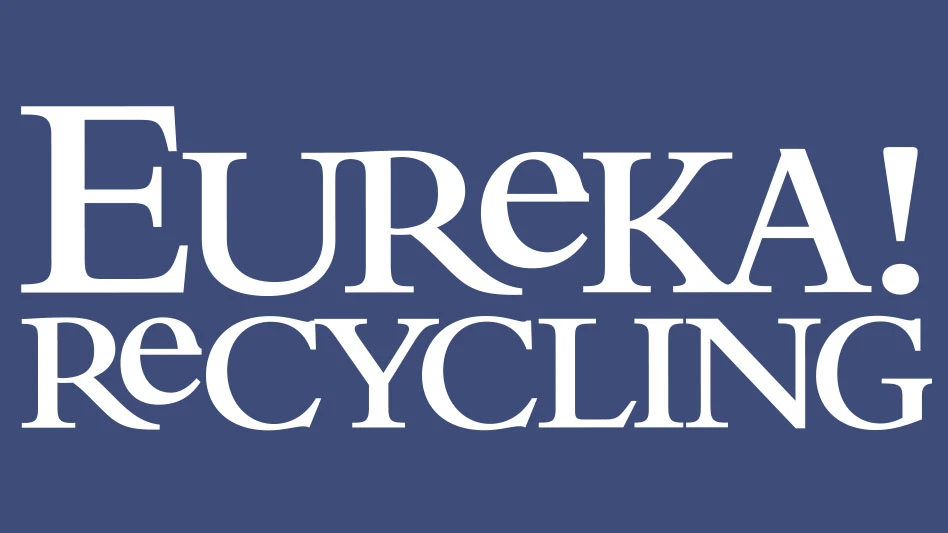 Though he described 2013 as a difficult year for the global scrap recycling industry, Björn Grufman, president of the Bureau of International Recycling (BIR), said the organization welcomed more than 1,200 attendees from 63 countries to its World Recycling Convention, “a great achievement given difficult market conditions.” The convention was June 1-4, 2014, at the Fontainebleau Hotel in Miami.
Though he described 2013 as a difficult year for the global scrap recycling industry, Björn Grufman, president of the Bureau of International Recycling (BIR), said the organization welcomed more than 1,200 attendees from 63 countries to its World Recycling Convention, “a great achievement given difficult market conditions.” The convention was June 1-4, 2014, at the Fontainebleau Hotel in Miami.
Grufman also highlighted the Brussels-based association’s decision to host the conference in Miami, which was based largely on the city’s central position with regard to Latin America.
Providing a look at how the recycling industry fared in 2013, Grufman said it was “the worst in many years.”
He explained, “The metals recycling industry witnessed reduced availability of scrap owing to lower levels of industrial activities and lower prices as a result of the overcapacity among our customers.” The outcome, he said, was “an even larger overcapacity in our sector than in steel.”
Thin margins
During the Nonferrous Metals Division Session, division president Robert Stein of Alter Trading, St. Louis, told attendees that margins for scrap processors continued to be compressed.
 “Prices being paid don’t allow the merchants to replace what they sell at acceptable margins,” Stein said. At the same time, “our industry is not well-understood” and legislation “is often biased against it,” Stein argued. For instance, he said more than 40 nations “create false internal markets by reducing their consumer fabricators’ prices of feedstock by banning or impeding exports [of scrap].”
“Prices being paid don’t allow the merchants to replace what they sell at acceptable margins,” Stein said. At the same time, “our industry is not well-understood” and legislation “is often biased against it,” Stein argued. For instance, he said more than 40 nations “create false internal markets by reducing their consumer fabricators’ prices of feedstock by banning or impeding exports [of scrap].”
Other persistent pressures on the nonferrous scrap industry—theft and fraud—were highlighted at the same meeting by the BIR’s International Trade Council Chairman Robert Voss, CEO of U.K.-based Voss International. Voss urged members to take advantage of access to the International Maritime Bureau’s database of information regarding fraud and other “ill-doings” which, he said, has already yielded specific benefits for his own business.
Guest presentations focused particular attention on developments in Latin America. Luis Fernando de Souza, raw materials corporate manager for Brazil’s biggest copper recycler, Paranapanema SA, noted that domestic copper consumption has “huge space to grow.” He also identified a rising trend in Brazil’s copper scrap imports.
Fellow guest speaker Alejandro Jaramillo, founder of Mexico-based service provider for the international recycling industry Glorem SC and a long-time member of the BIR Non-Ferrous Metals Division board, talked of Latin America’s “demographic bonus” of a relatively young population and of Mexico’s labor efficiency, with some indicators suggesting the country’s labor will be cheaper than China’s by 2020. Among the region’s challenges, Jaramillo said, is price distortion caused by some companies integrating value-added tax (VAT) into scrap prices.
Also during the session, Stein presented a commemorative plaque to Marita Sax, the widow of former BIR Non-Ferrous Metals Division President Larry Sax, in recognition of his contribution to the world recycling organization throughout more than 30 years.
|
BIR publishes updated global ferrous statistics The Bureau of International Recycling (BIR), Brussels, has published the fifth edition of its “World Steel Recycling in Figures.” The announcement was made during the BIR’s Ferrous Division meeting at the association’s World Recycling Convention & Exhibition, June 1-4, 2014, in Miami. The compilation of statistics on the global ferrous scrap markets was first published in 2010. Divisional President Christian Rubach said the publication and its statistics will be useful as the industry works to overcome trade barriers or restrictions. “We need it also as an argument toward the political institutions and the federations which work for metal industries and foundries,” Rubach said. Rolf Willeke, statistics advisor of the BIR Ferrous Division, summarized key findings contained in the report, which covers the five-year period from 2009 to 2013. The report notes that world crude steel production increased 3 percent in 2013 to 1.61 billion metric tons, according to the World Steel Association. Furthermore, according to the BIR’s 2013 figures, steel scrap consumption declined in the European Union member counties by nearly 5 percent but climbed in China and Japan. The BIR also calculated a steel scrap usage increase in world steel production to roughly 580 million metric tons last year. The report contains numerous charts covering steel scrap exports from the U.S., the European Union, Japan, Canada, Russia, Australia and South Africa. Global steel scrap export trade showed a downtrend last year compared with 2012. “Our figures show that ferrous scrap is used as a raw material by steelworks and iron and steel foundries around the globe and is an ecologically and beneficial raw material and an international commodity subject to global commodity prices,” observed Willeke. “I think this underlines the need for a free world raw materials market.” Visit www.bir.org/assets/Documents/publications/brochures/Ferrous-report-2014-LightWeb.pdf to view the publication online. |
A brighter ferrous outlook
A positive note was sounded during the event’s Ferrous Division meeting, where presenters offered promising signs of improvement for that sector’s future.
Ferrous Division President Christian Rubach, an executive with Germany’s TSR Recycling, said the division had received a number of positive signs in recent weeks.
“Global apparent steel consumption is forecast to grow in 2014 compared to 2013 worldwide by 3 to 5 percent,” Rubach said. But, he added, overcapacity in the sector will remain the biggest challenge.
Rubach said promising developments include a changing of the ranks within the European Commission and the fact that Robrecht Himpe, the incoming president of European steel association EUROFER and executive vice president at ArcelorMittal Europe, has spoken in support of free and fair trade.
“The conditions have changed under which we work,” said Rubach, explaining that steel producers and federations seem to now recognize steel scrap in Europe is in surplus and that exports should not be restricted.
 William Schmiedel, president of Sims Global Group Trade Corp., Sims Metal Management, New York City, said U.S.-based exporters of scrap have not been competitive in the global market and, therefore, arisings have not increased. He also said annualized U.S. scrap exports year to date were far below the 2013 level of 18.5 million tons.
William Schmiedel, president of Sims Global Group Trade Corp., Sims Metal Management, New York City, said U.S.-based exporters of scrap have not been competitive in the global market and, therefore, arisings have not increased. He also said annualized U.S. scrap exports year to date were far below the 2013 level of 18.5 million tons.
On the other hand, Schmiedel noted, “U.S. steel makers are enjoying some of the world’s best margins, and so not surprisingly steel imports into the U.S. in April increased 15 percent month to month.”
BIR Keynote speaker Jason Schenker, president of the financial research firm Prestige Economics, Austin, Texas, also provided a bullish view of the global recycling industry, at least in the short term.
Schenker said he forecasts a three-year period of growth, with the economies of the U.S., Latin America and China continuing on modest growth paths.
“It’s really a 2017 window where we become a bit more concerned about the downside,” he continued, “but for now we see a story of modest growth playing out.”
Schenker said Prestige analysts expect 2017 to bring upside risk for inflation and a weakening of the U.S. dollar.
Paper and plastics concerns
BIR Paper Division President Reinhold Schmidt of Germany-based Recycling Karla Schmidt said hurdles to free trade are detrimental to recycling industry growth in the paper sector. Referring to his home market as an example of a “negative” political environment, Schmidt said the introduction of a circular economy law in 2012 has weakened Germany’s recycling structure. “We don’t expect any privileges, but we want at least to be able to work in fair competition with public powers,” he said.
Similarly, European Recovered Paper Association (ERPA) President Merja Helander of Finland-based Lassila & Tikanoja in her update of the association’s activities described the European Parliament’s 2013 rejection of the end-of-waste proposal for paper as a surprise and a disappointment.
“ERPA will definitely do its utmost to start the process again,” Helander said. “We must not give up but find new ways to solve the problems.”
Ranjit Baxi of U.K.-based J&H Sales International reported on a drop in Europe’s recovered fiber shipments to China in the first quarter of 2014. U.S. shipments to China were broadly unchanged, whereas deliveries to China from other Asian countries more than doubled, Baxi said.
Baxi was honored during the session as recipient of this year’s Papyrus Award. In conferring the award, Schmidt described Baxi’s “exceptional” standing in the sector. Baxi also was appointed honorary president of the BIR Paper Division.
During the Plastics Committee Session, moderated by Chairman Surendra Borad of Belgium-based Gemini Corp., presenter Steve Wong of Hong Kong-based Fukutomi Co. Ltd. and president of the China Plastics Recycling Association told attendees about China’s new restriction on the import of black recycled pellets into China. Wong said authorities also were considering a ban on the import of compacted expanded polystyrene (EPS). Nonetheless, Wong said demand for recycled pellets was strong and higher prices were being offered.
Most concerning presently, Wong said, are the import duties and VAT importers have to pay as part of an effort to stop imports of low-value material.
The author is an editor with the Recycling Today Media Group. The BIR also contributed to this report.

Explore the July 2014 Issue
Check out more from this issue and find your next story to read.
Latest from Recycling Today
- Sofidel agrees to purchase Royal Paper assets
- US Plastics Pact report charts expansion path for recycled content in packaging
- USTR announces phased measures designed to address China’s shipbuilding dominance
- APR, RecyClass release partnership progress report
- Clearpoint Recycling, Enviroo sign PET supply contract
- Invista expanding ISCC Plus certification program
- Redwood partnership targets recycling of medium-format batteries
- Enfinite forms Hazardous & Specialty Waste Management Council





